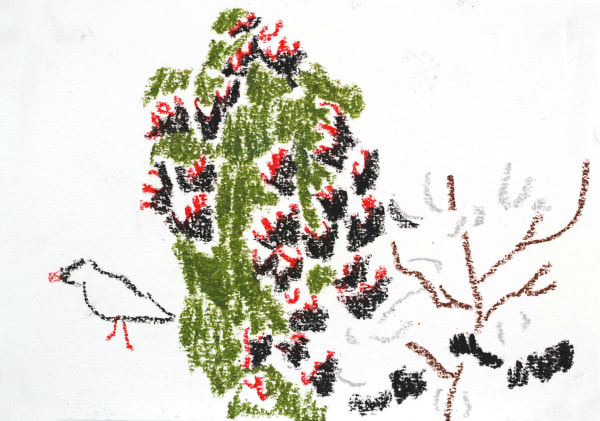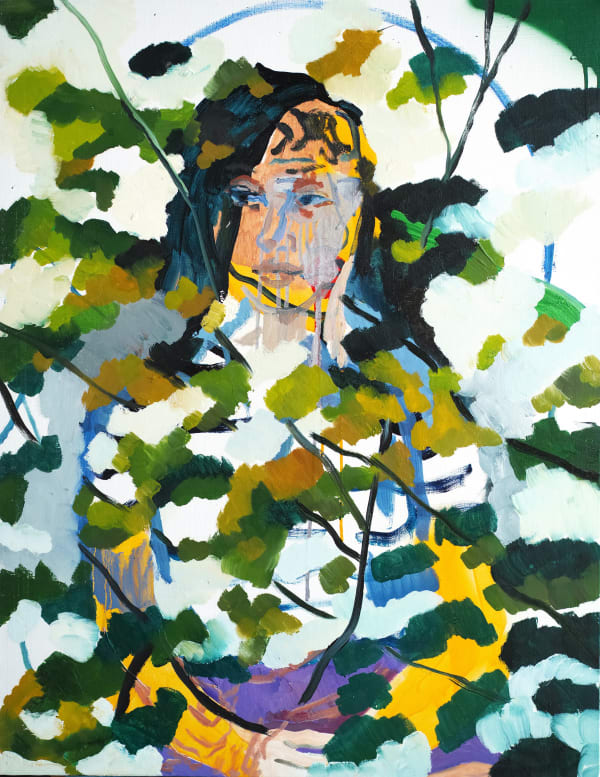Zheng Haozhong: TAKI
Past exhibition
Overview
TAKI is an important figure in the artist's simple social life structure. However, her somewhat unique identity, in a way, blurs her social property.
TAKI, Zheng Haozhong's second solo at BANK, follows, Lee Cha in2016. Lee Cha, (the artist's penname) works as a novelist and painter, whereby "Qiu Chen" and "the wanderer" were subjects of his long-term field research and observations. Here the artist studies two people who were in a particular state as socially marginalized individuals. The observation upon them presents a chance to investigate the edges of social consciousness. On one hand, they don't want to become the captive of standard social values; but on the other, it's impossible for them to completely detach their bodies as well as their life from human society. As a result, they constantly endeavor to reach a subtle yet fragile balance within the edge of society. Apparently, the appeal for freedom could be sensed from within. While the artist depicts his subjects, there are two other forces emerging from within the image -society and the artist as observer.
TAKI is a partner in Zheng Haozhong's life. On the surface, it seems that she takes the role as a visible medium to present the world Zheng sees. But in fact, as the life of TAKI and that of the artist are overlapped, the objects of observation in the artist's images - the presence of "man" striving to become independent - is partially erased. Like Camus' The Stranger, he resorts to a similar approach of "zero writing", introducing seemingly irrelevant and illogical events into the image, forming a kind of neutral writing with blankness. What Zheng Haozhong delineates is societal blankness, accentuating the missing half of a human figure while enhancing the proportion of the artist's own projection. He often completes multiple pieces of painting works simultaneously in an unpredictable manner, imbuing his work with a sense of fluctuation or of fluid time, resulting in the constant movement of human figures in his work. Such observations with massive space for blankness have been taken as a means for Zheng Haozhong to reach a kind of balance with society. How to represent the balance beyond rules? These images - the absent men - point directly beyond the negative form of society as well as the artist; in other words, the vacuum caused by the absence. It is thanks to such a vacuum that pure truth finds a way to be exposed.
TAKI, Zheng Haozhong's second solo at BANK, follows, Lee Cha in2016. Lee Cha, (the artist's penname) works as a novelist and painter, whereby "Qiu Chen" and "the wanderer" were subjects of his long-term field research and observations. Here the artist studies two people who were in a particular state as socially marginalized individuals. The observation upon them presents a chance to investigate the edges of social consciousness. On one hand, they don't want to become the captive of standard social values; but on the other, it's impossible for them to completely detach their bodies as well as their life from human society. As a result, they constantly endeavor to reach a subtle yet fragile balance within the edge of society. Apparently, the appeal for freedom could be sensed from within. While the artist depicts his subjects, there are two other forces emerging from within the image -society and the artist as observer.
TAKI is a partner in Zheng Haozhong's life. On the surface, it seems that she takes the role as a visible medium to present the world Zheng sees. But in fact, as the life of TAKI and that of the artist are overlapped, the objects of observation in the artist's images - the presence of "man" striving to become independent - is partially erased. Like Camus' The Stranger, he resorts to a similar approach of "zero writing", introducing seemingly irrelevant and illogical events into the image, forming a kind of neutral writing with blankness. What Zheng Haozhong delineates is societal blankness, accentuating the missing half of a human figure while enhancing the proportion of the artist's own projection. He often completes multiple pieces of painting works simultaneously in an unpredictable manner, imbuing his work with a sense of fluctuation or of fluid time, resulting in the constant movement of human figures in his work. Such observations with massive space for blankness have been taken as a means for Zheng Haozhong to reach a kind of balance with society. How to represent the balance beyond rules? These images - the absent men - point directly beyond the negative form of society as well as the artist; in other words, the vacuum caused by the absence. It is thanks to such a vacuum that pure truth finds a way to be exposed.
Installation Views
Works











